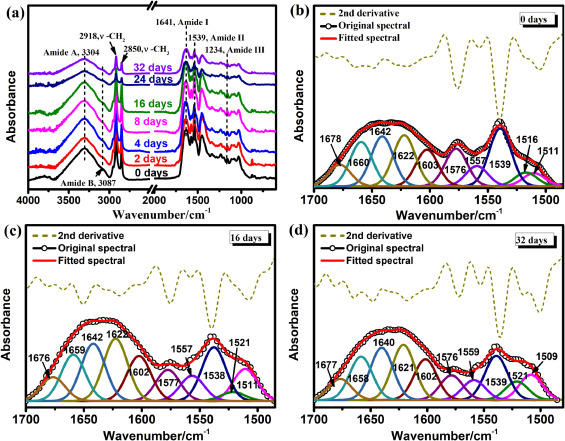Authors: Yadi Hu, Jie Liu, Guohe Han, Xiumin Li, Zonghui Zhang, Xuejing Zheng, Fang Wang, Ying Pei, Yong Lei, Keyong Tang
The deterioration of mimosa-tanned leather artificially aged at 80 °C and 60% relative humidity (RH) for up to 32 days was investigated. The changes in thermal properties, morphology, and structure were analyzed by thermogravimetric analyzer (TGA), polarized light microscopy (PLM), scanning electron microscopy (SEM), attenuated total reflectance-Fourier transform infrared spectroscopy (ATR-FTIR), and X-ray diffraction (XRD). The results showed that the mimosa-tanned leather was deteriorated with a decrease in hydroxyproline content. After the artificial aging treatment, the thermal resistance of the mimosa-tanned leather was reduced. This result was further confirmed by PLM observations that the shrinkage temperature of the collagen fibers decreased with increasing aging time. The evolved gaseous products from the TGA were detected by TGA-FTIR to characterize the deterioration caused by aging. After aging, the evolution yield of nitrogen-containing products such as NH3, HNCO, and pyrrole decreased, while the evolution yield of CO2 increased. According to the ATR-FTIR, XRD, and SEM results, the orientation and structural integrity of the collagen fibers were destroyed by artificial aging.

全文链接:https://doi.org/10.1016/j.culher.2021.11.007